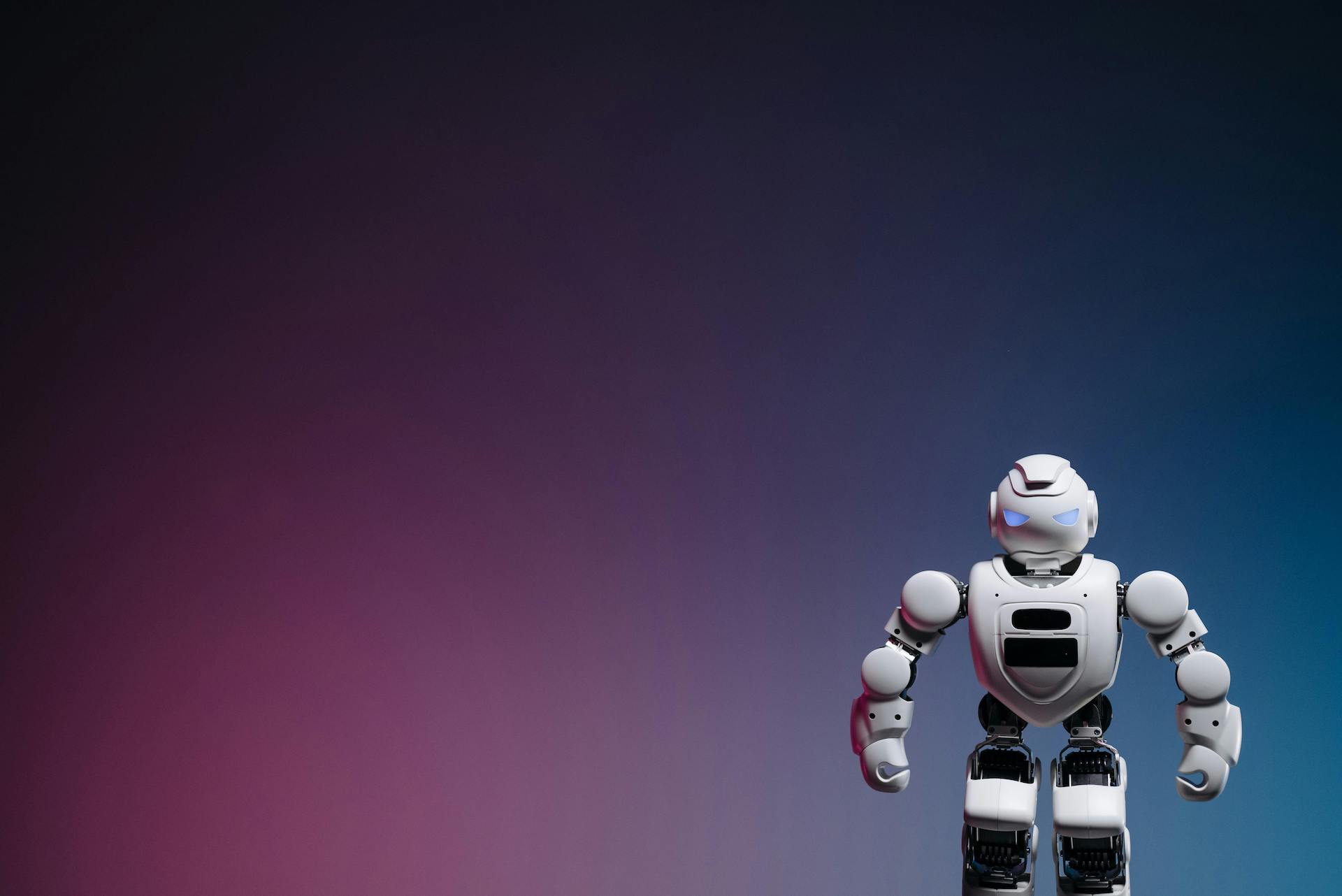AI Copywriting: Power Tool or Double-Edged Sword?
Listen up fellow biz owners, marketers, and writers – we have to talk about something big happening in our world right now. We’re talking artificial intelligence. Specifically, how AI copywriting tools like ChatGPT are turning the game upside down.
Now look, we get it. The idea of robot writers gives you the heebie jeebies. Just hearing “AI copywriter” makes you picture a creepy robot hunkered over a keyboard, stealing jobs from hardworking humans faster than you can say “SkyNet.”
But here’s the thing – AI is here to stay. There’s no stopping this train now. So we’ve got two options:
1. Freak out and go into full panic mode as we watch AI take over the world.
2. Take a deep breath and get smart about how we can use AI as a power tool to level up our copywriting skills rather than be replaced by it.
We’re all for option 2.
How about you?
Awesome, knew you’d make the right choice! Now let’s dive in and unpack how AI copywriting works so we can master using it as a force multiplier.
The Deal with AI Copywriting
AI copywriting tools use something fancy called natural language processing (say that 5 times fast). Essentially, these tools analyze massive amounts of data to understand language patterns. Then they use that knowledge to generate new content.
The more data they have, the more eloquent they become. And let’s be real – AI has access to more content than any human could digest in 100 lifetimes.
For copywriting, AI tools can take in data about a topic, your target audience, your brand voice, past campaigns – you name it. They identify patterns and relationships in that data, and voila! Out pops a blog post, social ad, landing page, you get the gist.
These robots can churn out full drafts in seconds that are clear, grammatically sound, and resemble something a human would write. Well kinda – more on that later.
But for now, the key point is: the better the data you feed in, the higher quality the copy that comes out.
It’s a classic case of “garbage in, garbage out.”
If you give an AI tool limited, outdated, or biased data, you’ll get crappy copy in return. Feed it rich, accurate information, and you’ll get content gold. The robots are only as smart as their data!
The Good, the Bad, and the Botly
Alright, so AI copywriting tools can generate content at warp speed. But is it actually any good?
In some ways – heck yes! AI takes care of the grunt work so we humans can focus on big picture strategy and creativity.
For starters, AI handles research in a snap. No more wasting hours combing the web just to get up to speed on a topic. ChatGPT has millions of authoritative sources at its robotic fingertips.
Ask it to summarize key ideas on a subject and boom – you’ve got a solid base to build on. Way faster than us slowpoke humans could manage.
AI also crushes repetitive crud like structuring content, tracking keywords, drafting basic copy, etc. The stuff that makes your eyes glaze over.
And for optimizing and testing variations of content? AI is a machine (literally). It can produce and analyze 100 headlines while we’re still brewing our morning coffee.
But (and this is a Kim Kardashian-sized but) AI has some major limitations we can’t ignore.
First, it lacks human creativity and emotion. AI can’t experience anger, heartbreak, joy, inspiration. At least not yet! So while it writes smoothly, there’s no real heart or personality.
And forget about humor or distinctive style. Anything too abstract or requiring “out of the box” thinking leaves AI stumped. They call it artificial intelligence for a reason – it’s an imitation of human genius, not the real deal.
There are also concerns around copyright, misinformation, and bias. AI just regurgitates data, so plagiarism and inaccuracies are a risk. And its writing may perpetuate problematic biases that exist in the training data.
So we definitely don’t wanna turn a blind eye and let AI run the asylum. But used strategically, it can kick our copywriting up a notch or three!
Wielding the Double-Edged Sword
When it comes to AI copywriting tools, the key is finding balance. If we go overboard relying on AI to do all the work, we end up with generic, sterile content.
But if we shun AI completely, we miss out on its benefits for efficiency and scale. So what’s the sweet spot?
Here are 5 tips to wield AI as your copy superpower:
1. Get crystal clear on goals and audience before you generate content. That way you can provide the AI with specifics to keep copy relevant. Don’t just hit a button and hope for the best.
2. Use AI to handle repetitive tasks like outlines and drafts. But don’t stop there – add your secret sauce! Spruce it up with personal stories, humor, snappy metaphors. Make it distinctly yours.
3. Lean on AI to create variations of copy for testing. Let data guide you to the highest performing option.
4. Double check for plagiarism or inaccuracies. Don’t just accept AI output as gospel – it can make mistakes.
5. Ensure copy aligns with brand voice and values. AI can’t perfectly reproduce your distinctive style.
See how with the right approach, we master the machine – not the other way around?
We’ve got to be vigilant to avoid AI running amok. But there’s so much opportunity to combine its scalability with human creativity.
The Game is Changing - Are You Ready to Play?
The rise of AI is a total game-changer. For better and worse, it’s transforming what effective copywriting looks like.
As AI copywriting tools keep evolving, we need to stay nimble and open-minded. Finding the right balance between human creativity and AI efficiency is key.
Neither fully hand-off to the robots nor stubbornly resist them. Instead, approach AI as a tool to enhance your abilities rather than replace them.
Let it handle repetitive prep work while you infuse imagination and artistry into the final dish.
Skilled chefs don’t fret about food processors chopping vegetables faster. They focus on imparting flavor through experience and technique.
Similarly, we must embrace AI’s ability to automate tedious tasks in order to focus on providing our unique creative spark.
If we stick to cookie-cutter content, we’ll quickly become obsolete. But if we embrace this opportunity to combine scalability with ingenuity, the sky’s the limit.
Like any powerful tool, this requires wisdom to direct it toward flourishing. But the future remains bright for those willing to adapt.
What do you think? How are you harnessing the power of AI copywriting in your business? Let us know in the comments!


